
It allows to keep PV going, with more focus towards AI, but keeping be one of the few truly independent places.
-
The function for converting from linear signal to V-Log data is as follows. With linear reflection as “in” and V-Log data as “out”,
out = 5.6*in+0.125 (in < cut1 )
out = c*log10(in+b)+d (in >= cut1 )
cut1 = 0.01, b=0.00873, c=0.241514, d=0.598206
This is from their PDF, and they use again "reflection" term instead of simple "sensor raw value".
-
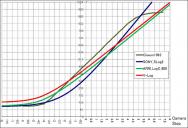
 sales13.jpg800 x 546 - 97K
sales13.jpg800 x 546 - 97K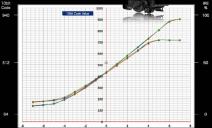
 sales14.jpg800 x 483 - 61K
sales14.jpg800 x 483 - 61K -
Some more charts (they look different because of x axis difference)
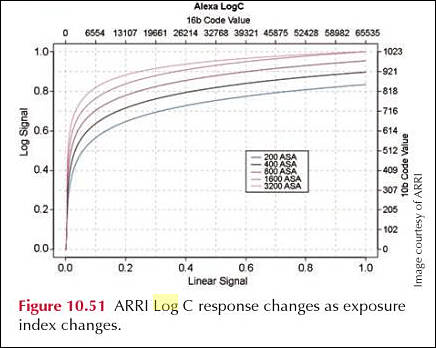
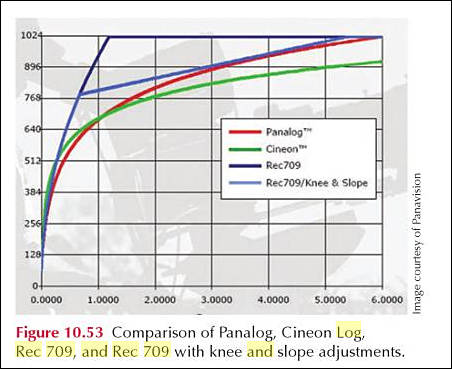
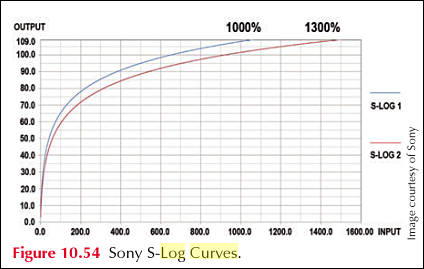

 sales15.jpg436 x 348 - 28K
sales15.jpg436 x 348 - 28K
 sales16.jpg452 x 369 - 33K
sales16.jpg452 x 369 - 33K
 sales17.jpg424 x 269 - 23K
sales17.jpg424 x 269 - 23K -
Btw
Rec. 709 coding uses SMPTE reference levels (a.k.a. "studio-swing", legal-range, narrow-range) levels where reference black is defined as 8-bit interface code 16 and reference white is defined as 8-bit interface code 235. Interface codes 0 and 255 are used for synchronization, and are prohibited from video data. Eight-bit codes from 1 through 15 provide footroom, and can be used to accommodate transient signal content such as filter undershoots. Eight-bit interface codes 236 through 254 provide headroom and can be used to accommodate transient signal content such as filter overshoots
Note that in latest standard for UltraHD same approach is still used (all range is not usable).
-
Yes, 16-235 studio-swing is the default standard for 8-bit Rec 709, but the standard also supports optional bitstream metadata flags that can be used to indicate 0-255 full-swing data. The GH4 supports this feature with a user-selectable option. When decoded, a full-swing H.264 stream will produce 8-bit data ranging from 0-255.
-
The GH4 supports this feature with a user-selectable option. When decoded, a full-swing H.264 stream will produce 8-bit data ranging from 0-255.
Did you made the test looking inside decoder? As one of the explanations of this option that I found is that it is flag that tells H.264 decoder to scale actual data that are in 16-235 range into 0-255 range.
Btw range restriction came from analog era (as well as stupid IRE). In digital it makes exactly zero sense, but people who developed standards are mostly old fashioned guys.
-
As one of the explanations of this option that I found is that it is flag that tells H.264 decoder to scale actual data that are in 16-235 range into 0-255 range.
Yes, and in the case of V-Log-L encoding, it's the limits it imposes on the scaled 8-bit output of the decoder that degrade the quality of the image. With V-Log-L on a 8-bit codec, the decoded output data will be limited to the range of 32-182, only about 7-bit precision. Regardless of how the YUV data is internally encoded within the H.264 macroblocks, the decoder will not produce any more image detail than that.
In my experience, 8-bit H.264 was just barely detailed enough to handle the GH2's 10-stop dynamic range with high image quality, but that was after the camera was hacked to record at 100Mbps. I seriously doubt the GH4 can squeeze 12-stops of dynamic range without visible degradation into something closer to 7-bit precision, regardless of the camera's increased bitrates.
-
With V-Log-L on a 8-bit codec, the decoded output data will be limited to the range of 32-182, only about 7-bit precision. Regardless of how the YUV data is internally encoded within the H.264 macroblocks, the decoder will not produce any more image detail than that.
If can be only explained by some utter incompetence of people who made it or by direct order of managers who wanted somehow to degrade it.
I seriously doubt the GH4 can squeeze 12-stops of dynamic range without visible degradation into something closer to 7-bit precision, regardless of the camera's increased bitrates.
Such limitation has absolutely nothing to do with DR of the sensor or footage. It affects only tonal properties.
Same for bitrate increases - main advantage lie in the high frequencies of color components.
-
V-log will be great for people using external 10 bit recording. 8 bit video has been a problem since the early 1990's when 10 bit became the accepted minimum for doing video effects work to avoid visual artefacts appearing during compositing many passes on digital tape. This whole issue has more to do with bit depth than where the log recorded black and white levels appear on an IRE scale.
BTW IRE is a simple 0-100% scale of bit 16-235 (8 bit) or bit 64-940 (10 bit) as defined by the rec601 and rec709 broadcast standards.
Most manufacturers are trying to move forward with new standards but must also remain compatible with existing broadcast standards.
I have done extensive tests with my GH4 using the 16-235, 16-255 & 0-255 settings to see how these settings were interpreted by Avid Media Composer, FCP7, FCPX, Adobe Premiere & Autodesk Smoke, all on Mac OSX. The only setting which mapped levels correctly on import to all those applications was 16-235. Theory is fine for discussion but nothing beats real-world practical testing with technical knowledge and accurate measuring instruments.
I will be VERY interested to see how 8 bit V-log holds up when pushed hard in colour grading software. Until I test it, it's just talk.
-
Such limitation has absolutely nothing to do with DR of the sensor or footage. It affects only tonal properties.
Exactly, but the hype for DR has become so one-dimensional that many have never even heard of tonal range, much less appreciate the tradeoffs involved in maximizing DR at its expense. Panasonic is marketing the GH4 upgrade both as a consumer product for those who desire Vlog bragging rights (e.g. versus Sony fanboys), as well as a tool for those who will actually use it as intended in a 10-bit LUT-based post production workflow.
-
What some people are calling IRE is really just the percentage on the RGB scale, where (0, 0, 0) is the black point and (100, 100, 100) is the white point. We use percentages because there are different ways of encoding RGB values, and we want to specify the RGB values without regard to any particular encoding. The code values of black and white will be different depending on what RGB encoding you are using. E.g., Rec.709 specifies a couple of ways of encoding RGB values (8-bit and 10-bit Y'CbCr). H.264 adds another (video_full_range_flag). HDMI has a few different encodings. There are multiple common RGB encodings, too, like floating point or integer with different ranges. But every one of those RGB encodings defines the code value for black and the code value for white and the ranges used, so that code values can be translated to and from an RGB percentage.
For cameras that record internally to a log color space, the RGB encoding is almost always Rec.709. Sony S-Log, Canon Log, Arri Log C, and Panasonic V-Log use Rec.709. GoPro Protune is the one exception I know of.
IRE is a scale for voltage in analog video systems. It is absolutely well defined, in IEEE standard 205-1958. IRE is defined in terms of the blanking level and the white level. It can be related to percentages on the RGB scale, if you also say which analog standard you are using. For analog HD video standards, IRE is equal to the RGB percentage. For analog SD video, they are not equal, depending on which country's analog standard you use. But these days everything's digital, so it's rather pointless to talk about IRE. The different manufacturers have not been consistent about dropping the outdated term.
-
This is from their PDF, and they use again "reflection" term instead of simple "sensor raw value".
Because it's not the raw sensor value. It's been debayered, scaled, white balanced, and transformed into V-Gamut. Usually it's just called 'scene linear'.
Howdy, Stranger!
It looks like you're new here. If you want to get involved, click one of these buttons!
Categories
- Topics List24,063
- Blog5,725
- General and News1,387
- Hacks and Patches1,153
- ↳ Top Settings33
- ↳ Beginners256
- ↳ Archives402
- ↳ Hacks News and Development56
- Cameras2,390
- ↳ Panasonic995
- ↳ Canon118
- ↳ Sony156
- ↳ Nikon96
- ↳ Pentax and Samsung70
- ↳ Olympus and Fujifilm102
- ↳ Compacts and Camcorders300
- ↳ Smartphones for video97
- ↳ Pro Video Cameras191
- ↳ BlackMagic and other raw cameras138
- Skill1,960
- ↳ Business and distribution66
- ↳ Preparation, scripts and legal38
- ↳ Art149
- ↳ Import, Convert, Exporting291
- ↳ Editors191
- ↳ Effects and stunts115
- ↳ Color grading197
- ↳ Sound and Music280
- ↳ Lighting96
- ↳ Software and storage tips266
- Gear5,420
- ↳ Filters, Adapters, Matte boxes344
- ↳ Lenses1,582
- ↳ Follow focus and gears93
- ↳ Sound499
- ↳ Lighting gear314
- ↳ Camera movement230
- ↳ Gimbals and copters302
- ↳ Rigs and related stuff273
- ↳ Power solutions83
- ↳ Monitors and viewfinders340
- ↳ Tripods and fluid heads139
- ↳ Storage286
- ↳ Computers and studio gear560
- ↳ VR and 3D248
- Showcase1,859
- Marketplace2,834
- Offtopic1,335
Tags in Topic
- v-log 14







